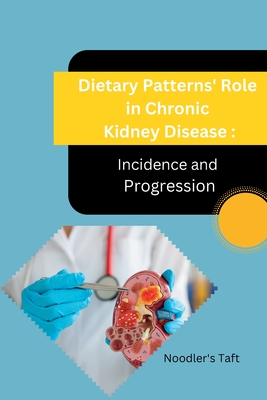You are here
Back to topDietary Patterns' Role in Chronic Kidney Disease Incidence and Progression (Large Print / Paperback)
Description
Chronic kidney disease (CKD) is a challenging condition that has wide-ranging impacts on patients, their families, and the healthcare system (1). Various approaches can be taken to prevent CKD, including reducing sodium intake, controlling glycemic levels and blood pressure, utilizing medications, and increasing CKD awareness and education (2). To bolster prevention efforts, it is essential to explore cost-effective and efficient strategies such as dietary modifications to prevent CKD and slow its progression. This book aims to delve into the significance of dietary patterns and beverage choices in the prevention and management of CKD.
Definition and Diagnosis of Chronic Kidney Disease
CKD is characterized by kidney abnormalities in structure or function that persist for more than three months and have health implications (3), as defined by global kidney guidelines. Glomerular filtration rate (GFR) serves as the most comprehensive measure of kidney function, estimating the rate at which fluid is filtered through the kidneys. Various equations exist to estimate GFR (eGFR), taking into consideration factors such as age, sex, race, and serum creatinine and/or cystatin C (4, 5). CKD is diagnosed when eGFR falls below 60 mL/min/1.73 m2, indicating stage 3 CKD. Additionally, proteinuria, characterized by elevated protein levels in the urine, is a marker of kidney damage that can also aid in the diagnosis and staging of kidney disease (3).
Prevalence, Risk Factors, and Complications
The prevalence of chronic kidney disease (CKD) in the United States is approximately 14% among adults, presenting a significant public health challenge (1). The primary risk factors for CKD are diabetes and high blood pressure, accounting for two-thirds of CKD cases. Additional risk factors include obesity, smoking, a family history of kidney disease, and racial factors. CKD can lead to various complications such as anemia, drug toxicity, high blood pressure, mineral and bone disorders, and cardiovascular disease. When CKD progresses to end-stage renal disease (ESRD), it is defined as an estimated glomerular filtration rate (eGFR) of less than 15 mL/min/1.73 m . In the United States, approximately 700,000 individuals are affected by ESRD (1). Patients with ESRD require renal replacement therapy (RRT), which includes dialysis treatment or a kidney transplantation. As of 2015, 63% of individuals initiated RRT with hemodialysis, 7% with peritoneal dialysis, and 30% had a functioning kidney transplant (1). Both dialysis and kidney transplantation impose significant burdens on patients, their families, and the healthcare system. These interventions are expensive, time- and resource-consuming, and diminish the quality of life (6-9).
